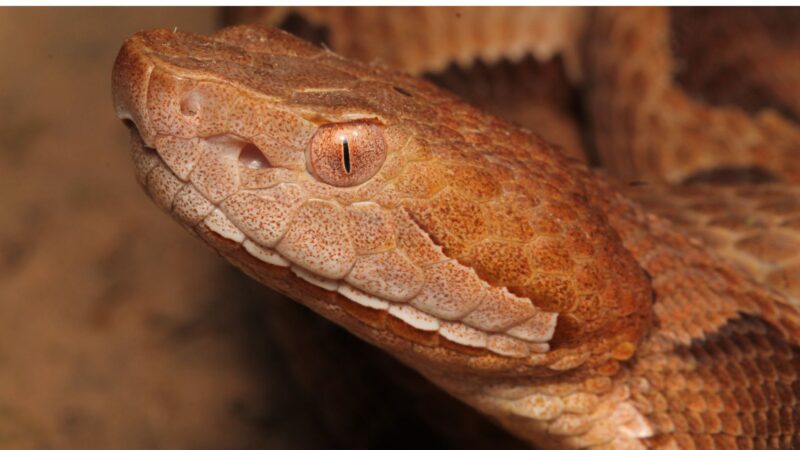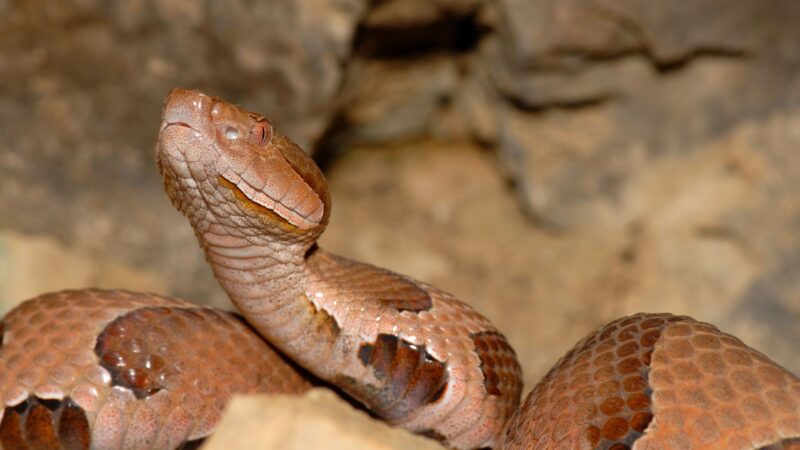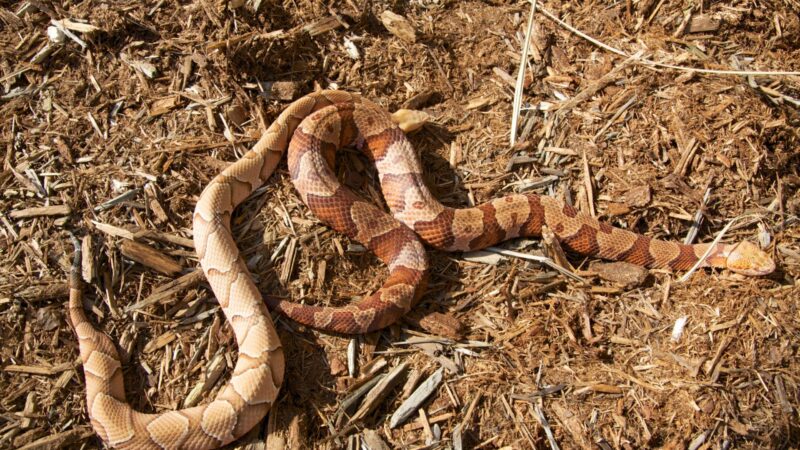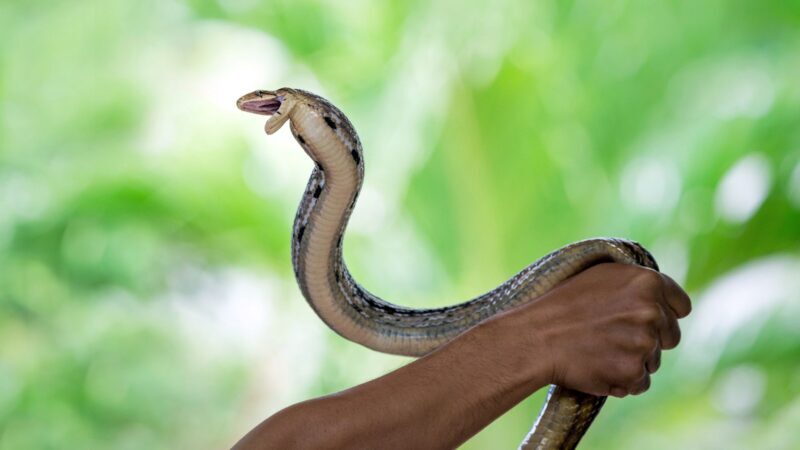Copperhead snakes are notorious for being responsible for a majority of the snake bites in the United States. For obvious reasons, no one would ever want one wandering into their lawn!
So, how to get rid of copperheads?
If you are wondering how to get rid of Copperheads, the process involves a comprehensive understanding of the snake habits, and using snake repellents or traps to manage the problem. A professional pest controller may also be employed to safely remove the snake.
Dive further into this detailed guide if you want to arm yourself with the knowledge to handle these snake encounters and apply preventive strategies to keep your yard snake-free.
What Are Copperhead Snakes?

Copperhead snakes (Agkistrodon contortrix) are heavy-bodied pit vipers with a total of 5 subspecies found across the Eastern and Central United States. They are responsible for a whopping 40% of all snakebites in the country.
What Do Copperhead Look Like?
Copperheads are named after their distinguishable reddish-brown bodies with crossband patterns of varying shades of rich brown, tan, and copper. These patterns are usually shaped like an hourglass.
On average, an adult copperhead measures between 2 to 3 feet. They are a sexually dimorphic species, which means females are longer than males.
What Do Copperhead Snakes Eat?
Adults mostly eat rodents, but they are also known to consume small birds, snakes, lizards, amphibians, and insects. Copperhead snakes rely on concealing itself in its environment and ambush to attack prey.
Where Do Copperheads Live?
These snakes have a wide geographic range, which helped them inhabit a variety of habitats:
- Northeast – open woodlands, deciduous forests, areas with woody vegetation
- Southern coastal plains – wet woodlands such as swamp edges
- West – mixed woodlands and arroyos
Copperhead snakes are also associated with man-made environments such as suburban neighborhoods, sawdust piles, and construction areas.
How Long Does Copperhead Live?
The oldest wild Copperhead ever recorded lived up to 18 years although they are projected to have a maximum lifespan of 15 years in the wild. In captivity, they live longer lifespans of 20 to 29 years.
Snakes Commonly Mistaken for Copperheads
The two most common snake species that are often mistaken for Copperheads are the non-venomous corn snake and northern water snake.
Here’s how to properly identify the three species apart:
| Characteristics | Copperhead Snake | Corn Snake | Northern Water Snake |
| Color | Varying shades of tan, brown, and copper | More vibrant and are typically redder in appearance | May be brownish, grayish, or tan |
| Head | Triangular head | Smaller and narrower head | Narrower head |
| Eyes | Elliptical pupils | Round pupils | Round pupils |
| Body | Crossbands on the length of their bodies are hourglass-shaped | Thick blotch markings on their backs | Dark blotches that are wider towards the backbone and narrow on the sides |
Are Copperheads Aggressive?

No, they are not aggressive by nature. In fact, they tend to avoid direct contact with humans and pets. However, they may resort to biting if they are disturbed, whether intentional or accidental.
Are Copperheads Poisonous?
Copperhead snakes are not poisonous—they are venomous. Their venom is hemolytic in nature, which means it works by destroying red blood cells, causing tissue lysis and hemorrhage.
Although most copperhead bite cases are rarely fatal, especially for healthy adults, they are still extremely painful nonetheless.
Related: Gopher Snakes | Are They Poisonous?
What Attracts Copperhead Snakes?
Places with a variety of prey and hiding areas such as hay bales, flower beds, and sawdust. Yards with dense shrubbery or turfgrass are also attractive to copperheads.
Should You Try Killing a Copperhead Snake?

No, not only is it dangerous but it is generally illegal in many states. Getting rid of these snakes involves a combination of humane and ethical preventive strategies.
Signs & Causes of a Copperhead Snake Infestation
Telltale signs of these venomous snakes include the following:
- Sightings
- Shed snake skin
- Snake droppings
- Strange noises inside vents, walls, and other structures
As mentioned earlier, causes of these infestations may be due to abundance of food and hiding spots.
Related: How to Identify Snake Droppings? | Identification and Guide
How to Get Rid of Copperhead Snakes?
Simply employ the following methods to get rid of these scary snakes:
- Apply snake repellents in areas where they may frequently visit.
- Install state-of-the-art snake traps.
- Reduce pest populations to make your vicinity less appealing for the snakes.
- Contact professional snake trapper services to safely and efficiently get rid of copperheads that come into your property.
Related: How to Get Rid of Cottonmouth Snakes? | Effective Techniques and Safety Tips
How to Keep Copperhead Snakes Away From Your Yard/House?
Always keep your area neat and clean by eliminating trash, controlling populations of mice and rats, sealing off any potential entry points, and conducting regular inspections.
Related: How to Get Rid of Black Rat Snakes? | Effective, Safe, and Humane Solutions
How to Trap Copperhead Snakes?

Although trapping is one way of getting rid of copperhead snakes, it is essential that you contact a professional wildlife expert first to set it up for you. Once they are caught in the trap, call them again so that the snakes can be properly handled.
Related: Best Natural Snake Repellents: A Complete Guide
List of Sources
Brys, A. K., Gandolfi, B. M., Levinson, H., & Gerardo, C. J. (2015). Copperhead Envenomation Resulting in a Rare Case of Hand Compartment Syndrome and Subsequent Fasciotomy.
Hartsuff, A. (n.d.). Agkistrodon contortrix: Southern Copperhead.
Johnson, P. D. (2020). Identifying Copperhead Snakes.
Smithsonian’s National Zoo & Conservation Biology Institute. (n.d.). Northern copperhead.
Tennessee Wildlife Resources Agency. (n.d.). Copperhead.
University of Georgia. (n.d.). Copperhead (Agkistrodon contortrix).
- How to Get Rid of Copperheads | Practical Guide - August 27, 2023
- How to Get Rid of Corn Snakes | What Makes Them Aggressive? - August 27, 2023
- How to Get Rid of Alligators | Safety Measures and Removal Methods - July 16, 2023

